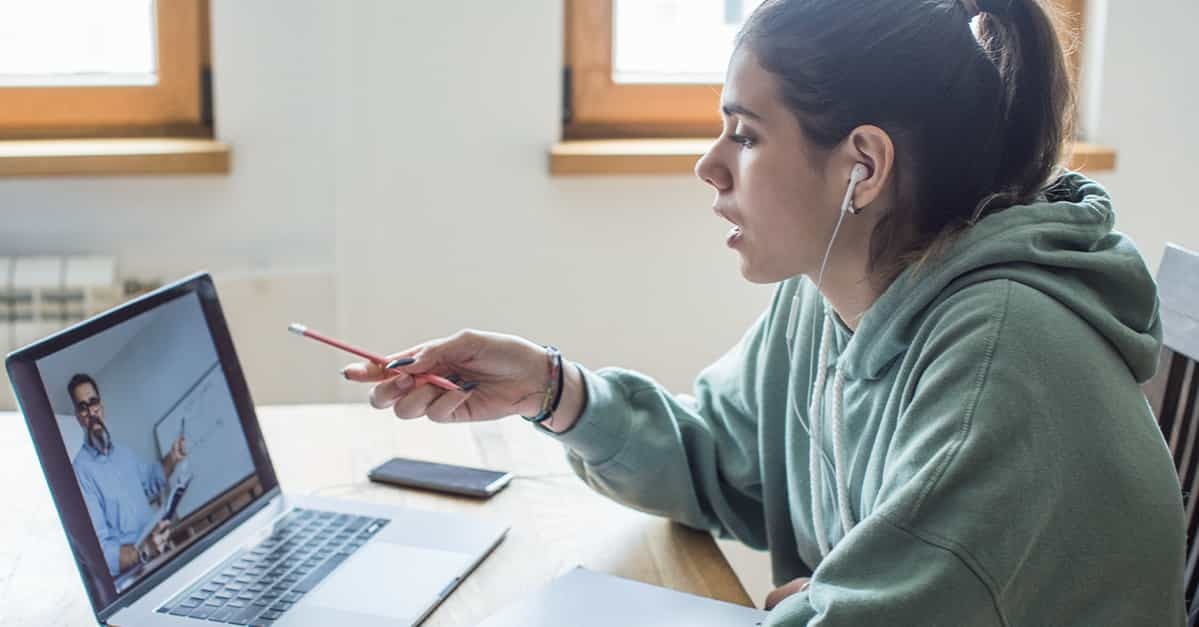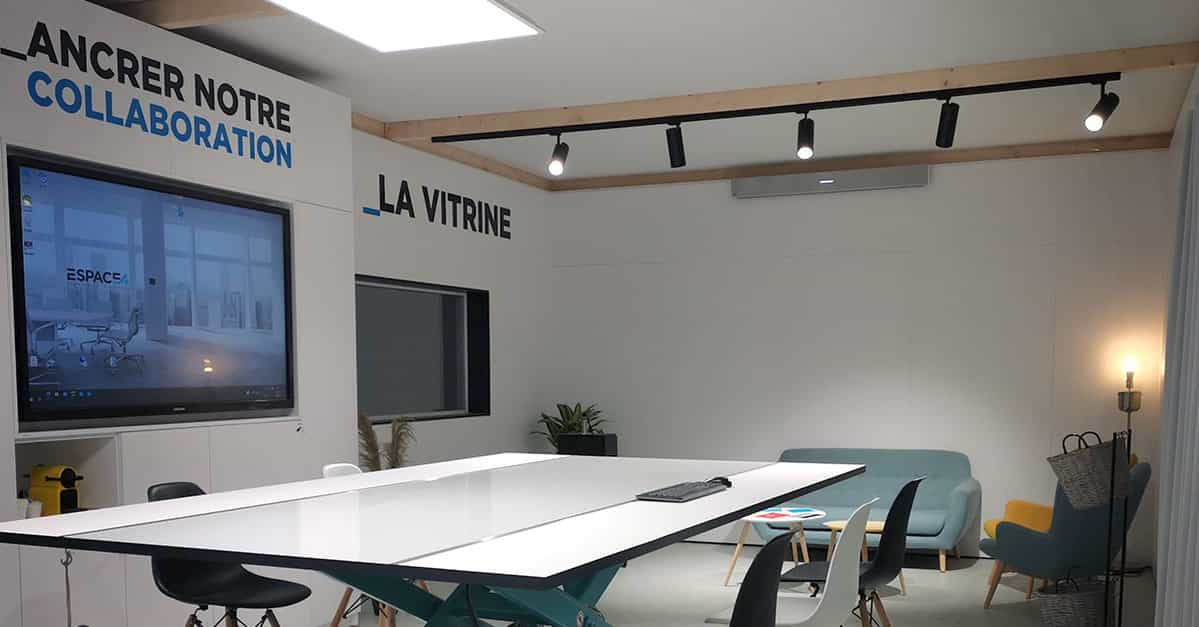September 22, 2022
How THIRA Health uses Nureva audio to keep patients connected
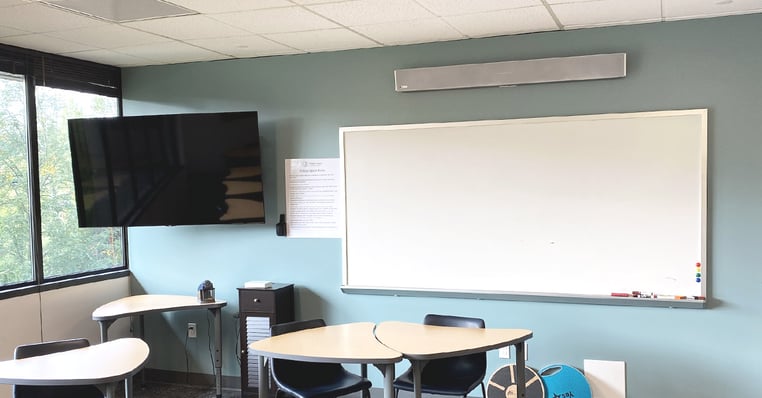
Posted by Tricia Whenham on Sep 22, 2022 6:00:00 AM
When patients come to THIRA Health, it’s often after other treatments have failed. The message to them is simple.
“When we see somebody who has suffered so mightily, we say, ‘Come on over. We have just the thing, and we’d love to talk to you,’” says Sarah Skottero, director of business development.
For Skottero and the rest of the team at THIRA, this is more than just a job. The organization has been treating women and teen girls with complex expressions of depression, anxiety and eating disorders for decades. Some patients come to them after having attempted suicide. In all cases, the goal is to instill not only skills and awareness but a sense of hope – using a proven approach to saving lives.
The hybrid challenge
COVID-19 was a game changer. “Things that we used to think weren’t possible, from a service perspective, have become required,” explains Dr. Kathryn Korslund, THIRA’s chief clinical officer.
At the beginning of the pandemic, THIRA made a quick pivot to remote care for its Intensive Outpatient Programs (IOP). Group treatment sessions continued – with everyone joining a Zoom call remotely.
The remote service approach worked well enough for IOP, but a gap in care remained for the on-site Partial Hospitalization Program. “The next wave of the pandemic meant that we needed a solution for when some patients or staff were off-site but others were still on-site,” says Dr. Korslund.
“And that’s when we discovered that our setup, while it worked brilliantly when everyone was remote, did not work well when you were in a hybrid situation.”
With continuity of care at risk, THIRA began looking for an audio solution to make patients feel fully involved – no matter where they were. “We needed to find a way to make it normalized that people in the room and at home were all a part of one community,” says Dr. Korslund.
Choosing Nureva audio
Phil Snyder, THIRA’s senior facility operations manager, was given a tall task – find an audio system that could create that sense of community without breaking the bank. That’s when he discovered Nureva® audio. “We were looking for a hybrid system, and it fit right into our criteria.”
He booked a live demo to hear how the Nureva HDL300 system sounded. “To me, it almost seemed too simple and too effective,” he says. But when he tried out a unit in one of THIRA’s classrooms, he was pleased that it worked just as well as it had during the demo.
Snyder was impressed by the sound clarity – people in the room and remote could hear each other easily. It even eliminated background noise coming from a noisy fan in the room.
Most of all, he liked that there were no surprises. “It worked exactly how we had hoped it would work,” he says. “It was so easy I could just walk away – and it was fine.”
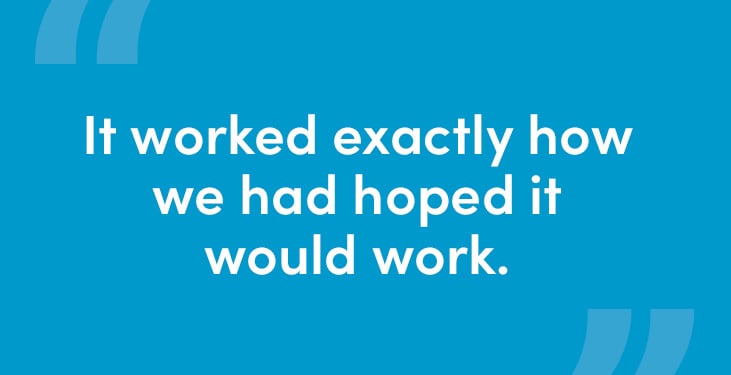
Voice pickup everywhere
When sessions began, the Nureva difference was immediately apparent. “People at home felt like they were participants, not afterthoughts,” says Dr. Korslund.
Because THIRA runs group sessions, it’s crucial that patients hear each other, not just hear the facilitators. “People who are joining remotely have to hear a person’s comment in the room to be able to make a relevant addition to the conversation,” she explains. “If they don’t, you have a very strained therapy experience.”
This was where the Nureva HDL300 system really shone. Because it uses patented Microphone Mist™ technology to fill rooms with virtual microphones, everyone could be heard everywhere – with no need to pass around mics or repeat comments. Whether the chairs in THIRA’s classrooms are set up in a semicircle or staggered around the room, there are no pickup dead zones to avoid.
“People were surprised that they could be heard even in the back of the room,” says Snyder. “It created the opportunity for interaction to be as normal as it could be.”
Patients became invested in making sure that their remote counterparts were fully involved. “I remember a situation in the adult class where somebody had to stay home, due to infection control reasons,” says Snyder. “Everybody in the room was insistent that nothing start until she joined class virtually. That was special to see because they kept that connection they had in that group.”
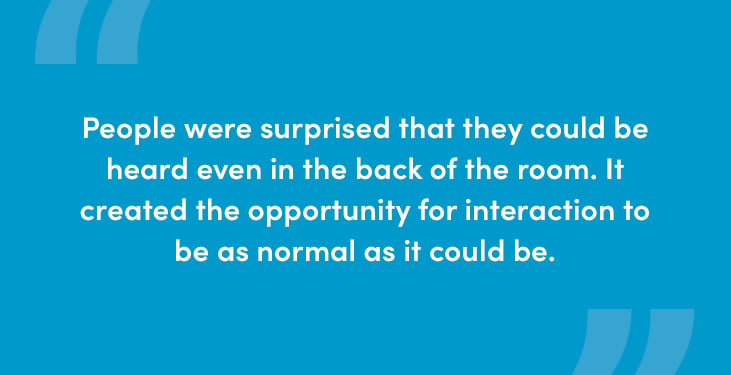
The movement advantage
Not only did the Nureva system support better group discussions, it also helped the THIRA team expand virtual programming.
Weekend sessions at THIRA tend to be focused on movement, mindfulness and art, such as yoga or expressive art therapies. In the beginning, the team didn’t offer this type of programming virtually. “We didn’t think we could pull it off,” says Dr. Korslund.
But seeing how well the system picked up voices from every inch of the space changed the team’s perception of what was possible.
“What we’ve discovered is that the sound quality is rich, even when people are moving around,” she says. “So we can do that experiential activity through a virtual platform. That was a real surprise to us.”
And even in regular hybrid sessions, THIRA facilitators appreciate their freedom of movement. “You need to be able to sashay around the room, move in with one person, and then come back to the group,” says Dr. Korslund. Now facilitators can run sessions naturally without the tech getting in the way.
Continuity for clients and staff
With a virtual experience almost as good as in-room, THIRA Health has been able to maintain continuity of care. “When patients need to stay home for infection control reasons, it has been so much easier for them because they still really feel like they’re a part of everything,” says Dr. Korslund.
And it’s not just the patients that have experienced the benefits of a hybrid approach. Before Nureva, it was a struggle when staff had to stay off-site because of exposure or illness. “We were scrambling to make sure we had adequate staffing to serve our patients,” she says. “When someone is feeling well enough to work but needs to be out because of infection control protocol, we are delighted to be able to let them keep their schedule.”
10 out of 10
With benefits like these, it’s no surprise that Phil Snyder rates the HDL300 highly – and that he’s equipped a second classroom with the system. “I would give it a 10 out of 10,” he says. “And I would recommend it to any other health care provider.”
Dr. Korslund has a different kind of praise. “I hear really nothing about it. As somebody who sits at the top of the apex, it’s lovely to not hear about something that’s a problem for someone.”
The early success of Nureva audio has got Sarah Skottero thinking big. “Equity in health care is all about accessibility. Could we become, for lack of a better phrase, a care extender? Could we scale what we are doing so we can reach people while they’re waiting to get into a more intensive program at THIRA?”
For now, the team is grateful that during challenging times, they are maintaining continuity of care – and going beyond.
“Our patients are getting excellent care, and they also know we’re thinking outside the box to make sure they don’t have to miss out, even when they can’t be there in person,” says Skottero. “That’s a big win.”
Simplify your audio
Nureva has simplified everything about audio conferencing. Installation is an easy job you can do in about 30 minutes. You get true full-room coverage without the cost and hassles of multicomponent systems. And you can manage Nureva audio from anywhere.

Posted by
Tricia Whenham
September 22, 2022














